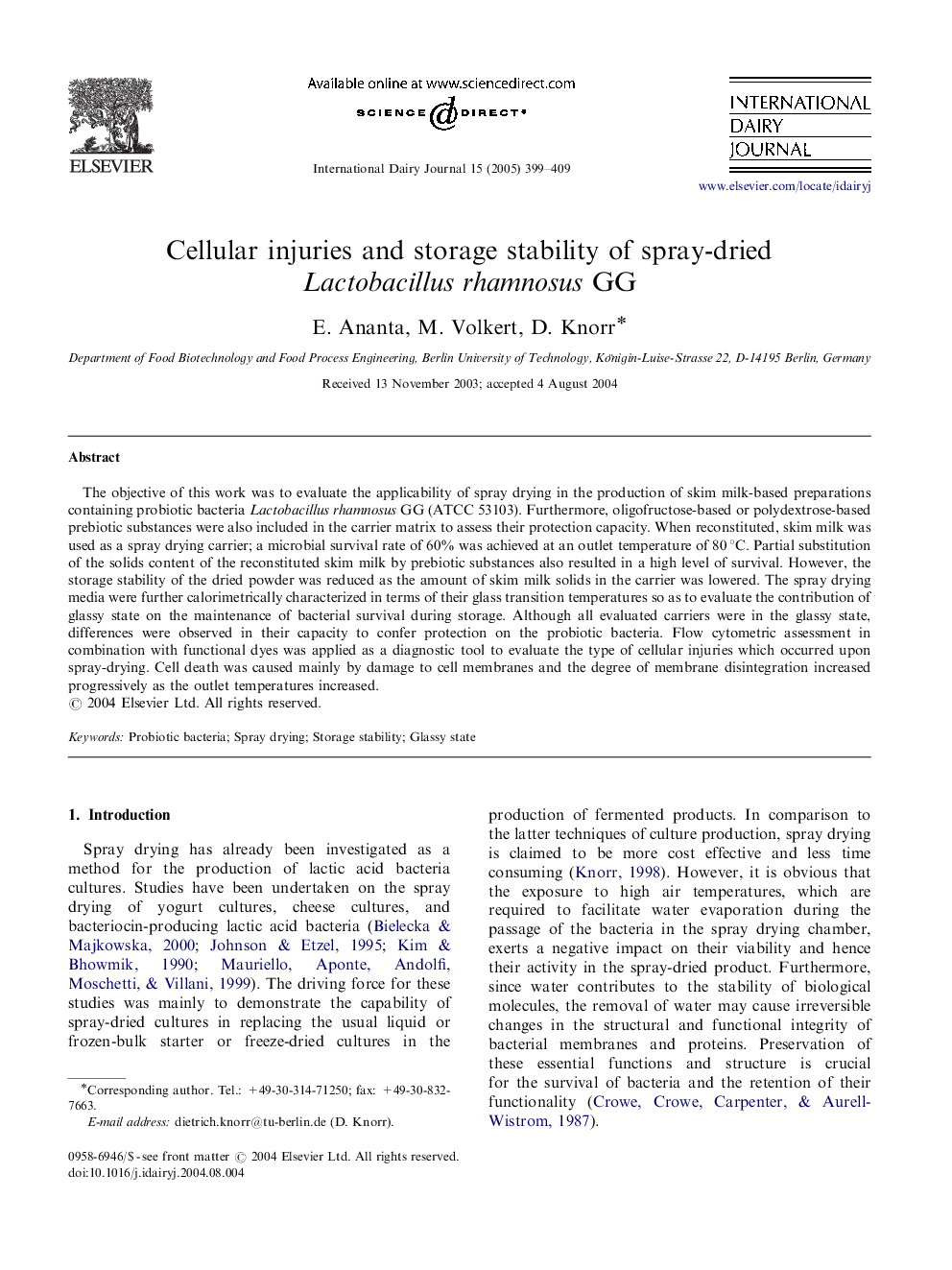| Article ID | Journal | Published Year | Pages | File Type |
|---|---|---|---|---|
| 8979321 | International Dairy Journal | 2005 | 11 Pages |
Abstract
The objective of this work was to evaluate the applicability of spray drying in the production of skim milk-based preparations containing probiotic bacteria Lactobacillus rhamnosus GG (ATCC 53103). Furthermore, oligofructose-based or polydextrose-based prebiotic substances were also included in the carrier matrix to assess their protection capacity. When reconstituted, skim milk was used as a spray drying carrier; a microbial survival rate of 60% was achieved at an outlet temperature of 80 °C. Partial substitution of the solids content of the reconstituted skim milk by prebiotic substances also resulted in a high level of survival. However, the storage stability of the dried powder was reduced as the amount of skim milk solids in the carrier was lowered. The spray drying media were further calorimetrically characterized in terms of their glass transition temperatures so as to evaluate the contribution of glassy state on the maintenance of bacterial survival during storage. Although all evaluated carriers were in the glassy state, differences were observed in their capacity to confer protection on the probiotic bacteria. Flow cytometric assessment in combination with functional dyes was applied as a diagnostic tool to evaluate the type of cellular injuries which occurred upon spray-drying. Cell death was caused mainly by damage to cell membranes and the degree of membrane disintegration increased progressively as the outlet temperatures increased.
Related Topics
Life Sciences
Agricultural and Biological Sciences
Food Science
Authors
E. Ananta, M. Volkert, D. Knorr,
